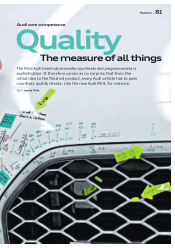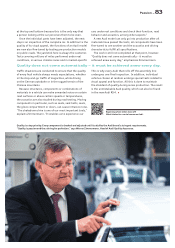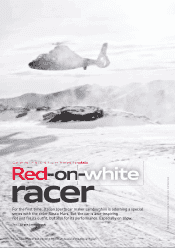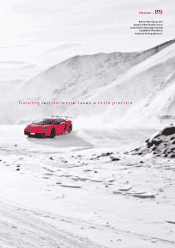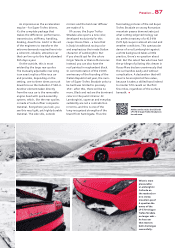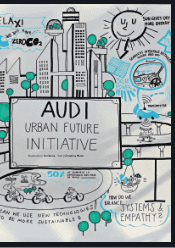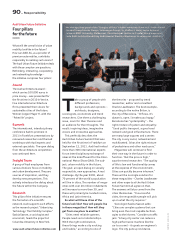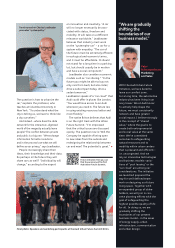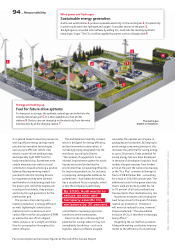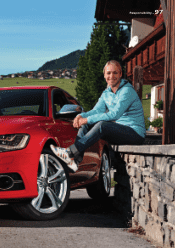Audi 2011 Annual Report Download - page 94
Download and view the complete annual report
Please find page 94 of the 2011 Audi annual report below. You can navigate through the pages in the report by either clicking on the pages listed below, or by using the keyword search tool below to find specific information within the annual report.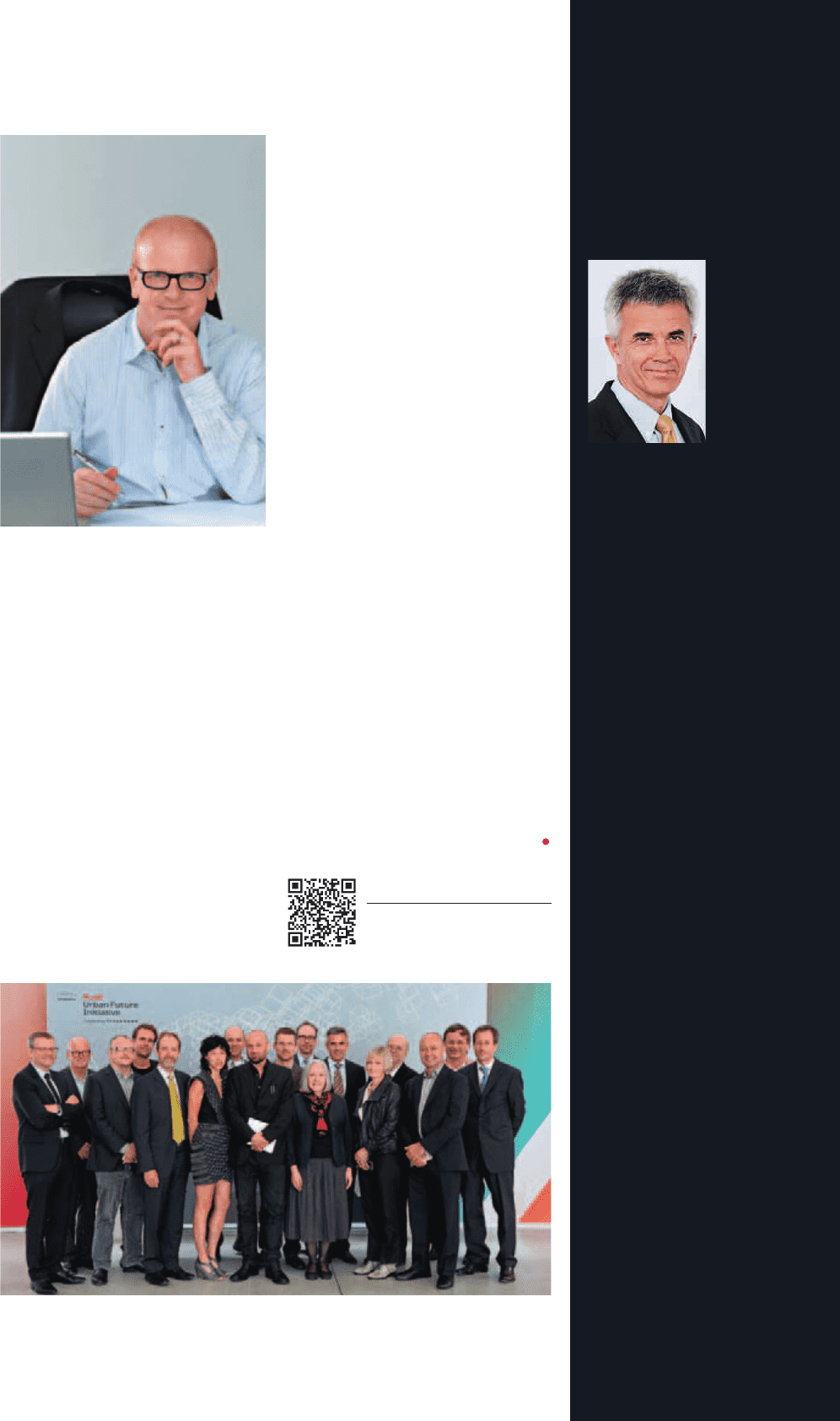
The question is how to urbanize the
car,” explains the professor, who
teaches at Columbia University in
New York. “To understand what the
city is telling us, we have to think like
a city ourselves.”
And indeed – where does the data
network for the interactive, digitized
world of the megacity actually leave
people? The confl ict between private
and public is a big one. “We exchange
information for better solutions
and in the process lose what we still
defi ne as our privacy,” says Leadbeater.
People increasingly share their
ideas, their knowledge and their data.
So perhaps in the future they will
share cars as well? “Individuality will
change,” according to the expert
on innovation and creativity. “A car
will no longer necessarily be asso-
ciated with status, freedom and
mobility. It will take on a diff erent
relevance worldwide.” Leadbeater
believes that industry must work
on the “systempho-car” – a car for a
system with empathy. “The car of
the future must be extremely effi cient
in ecological and economic terms,
and it must be aff ordable. It should
not stand for a long time in a parking
lot, but should usually be in motion
and have a social component.”
Leadbeater also considers economic
models such as “car sharing.” “In the
future you might be able to buy not
only cars from Audi, but also miles;
drive a subcompact today, drive a
sedan tomorrow.”
Leadbeater speaks of a “car cloud” that
Audi could off er in places like London.
“You would have access to an Audi
whenever you need it. The future lies
in using existing resources better and
more fl exibly.”
The native Briton believes that Audi
is on the right track with the Urban
Future Summit. “I’m impressed
that the critical issues are discussed
openly. The question now is: Will the
Company be capable of being open
to new ideas from the outside and
redesigning the relationship between
car and man? The potential is great.”
With the Audi Urban Future
Initiative, we have dared to
leave our comfort zone.
For a long time, the automotive
industry has been living in an
ivory tower. We at Audi know:
To actively help shape the
future, we must consistently
network and have greater
social impact. I believe strongly
in the concept of “shared
value,” where the goal is to
create both entrepreneurial
and social value at the same
time. We’ve committed
ourselves to safeguarding
natural resources and to
mobility within urban centers
that is pleasant and effi cient –
i.e. uncongested. And we
rely on innovative technologies
and business models: varia-
tions of “pool leasing” or the
“car cloud” are among our
considerations. The initiative
we launched prepared the
way for well-defi ned team-
work on designing our future
living space. Together with
an expanded group of stake-
holders, we will join in con-
crete planning eff orts with the
goal of safeguarding the
highest possible quality of life
for all. In doing so, we are
gradually shifting the
boundaries of our present
business model – in the areas
of energy supply, urban
infrastructure, communication
and urban design.
“We are gradually
shifting the
boundaries of our
business model.”
Final photo: Speakers and workshop participants at the Audi Urban Future Summit 2011.
Peter
Schwarzenbauer
Marketing
and Sales
Future initiative: Here you can
fi nd the summary of the fi rst
Audi Urban Future Summit.
Trend researcher Charles Leadbeater
promotes “systempathy.”


